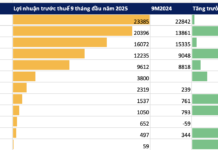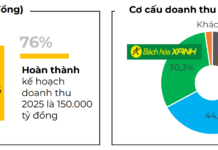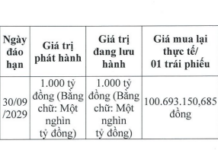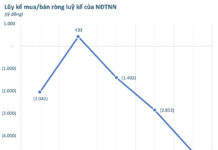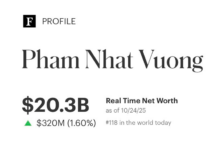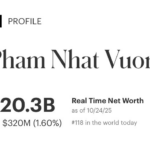The green transition presents both opportunities and challenges.
 |
Dr. Tran Du Lich shared at the talk show.
|
At the talk show “Solutions for Developing Green Credit in Vietnam” held on May 29, 2024, Dr. Tran Du Lich, Member of the Advisory Council for Financial and Monetary Policy, shared that since 2014, the Government has had Decision 403, which assigns the State Bank of Vietnam (SBV) to issue policies related to green credit. The SBV has also issued many circulars and decisions on this matter, and nine years have passed since its implementation.
The green transition is an inevitable trend that presents both opportunities and challenges for developing countries. In reality, some of Vietnam’s export industries, such as textiles, have faced difficulties due to a slow green transition.
Drawing on international experience, South Korea successfully developed a holistic green economy in 2008 amid a global financial crisis, from prioritized sectors to a synchronized national strategy.
In Vietnam, the Law on Environmental Protection, which took effect on January 1, 2022, outlined several areas for green credit, including efficient use of natural resources, projects related to climate change adaptation, waste management, eco-friendly housing, and restoration of natural ecosystems. This is a relatively broad framework that is currently being implemented.
Specifically for Ho Chi Minh City, Mr. Lich believes that the priority areas for promoting a green economy in the city’s development strategy include renewable energy, rooftop solar power, biomass energy, and programs to reduce emissions in transportation.
Industrial parks are gradually transitioning to green practices, reducing carbon emissions per unit of production. In the future, when the carbon credit market takes shape, businesses that do not meet the requirements will have to purchase carbon credits, while those with surplus credits can sell them in this market. One of the future financial costs will be related to buying or profiting from carbon credits.
These issues highlight the need to promote support for businesses in green credit. This requires stronger efforts, and Dr. Lich suggests that it can be achieved through policies and financial support from the government.
“In 2018, the SBV collaborated with the International Finance Corporation (IFC) to organize and provide additional support to commercial banks in assessing environmental risks for green credit. This is crucial in building trust and providing a foundation for commercial banks to implement green credit. It is an inevitable trend that we must pursue vigorously. Currently, there are two opportunities: the green transition and digital transformation. If we lag in these two areas, we will face many challenges,” emphasized Mr. Lich.
Green credit is shaping up to be a trend that leads the economy.
Dr. Lich suggested that it is necessary to define a catalog of sectors and industries that meet green criteria and those that do not. He also recommended that the government include a focus on the green economy in its five-year plan for 2026-2030.
First, while the SBV can instruct banks to promote green credit, it still manages credit through limits. Perhaps these limits could be expanded for green credit. If banks engage in green credit, they might be exempt from the credit limit ceiling for green projects, providing commercial banks with a substantial opportunity to implement green credit.
Second, Ho Chi Minh City could apply some interest rate support mechanisms, similar to those used for technological innovation, to boost green credit.
Third, the management capabilities of commercial banks regarding green credit and the team of experts assessing the impact of green credit need attention. This team plays a crucial role in monitoring the flow of green credit funds to ensure they are directed to the right “green” areas.
Finally, we should take advantage of the international credit commitments already in place. Banks should have policies in place to tap into global green credit investment funds, enriching our capital sources for the future.






